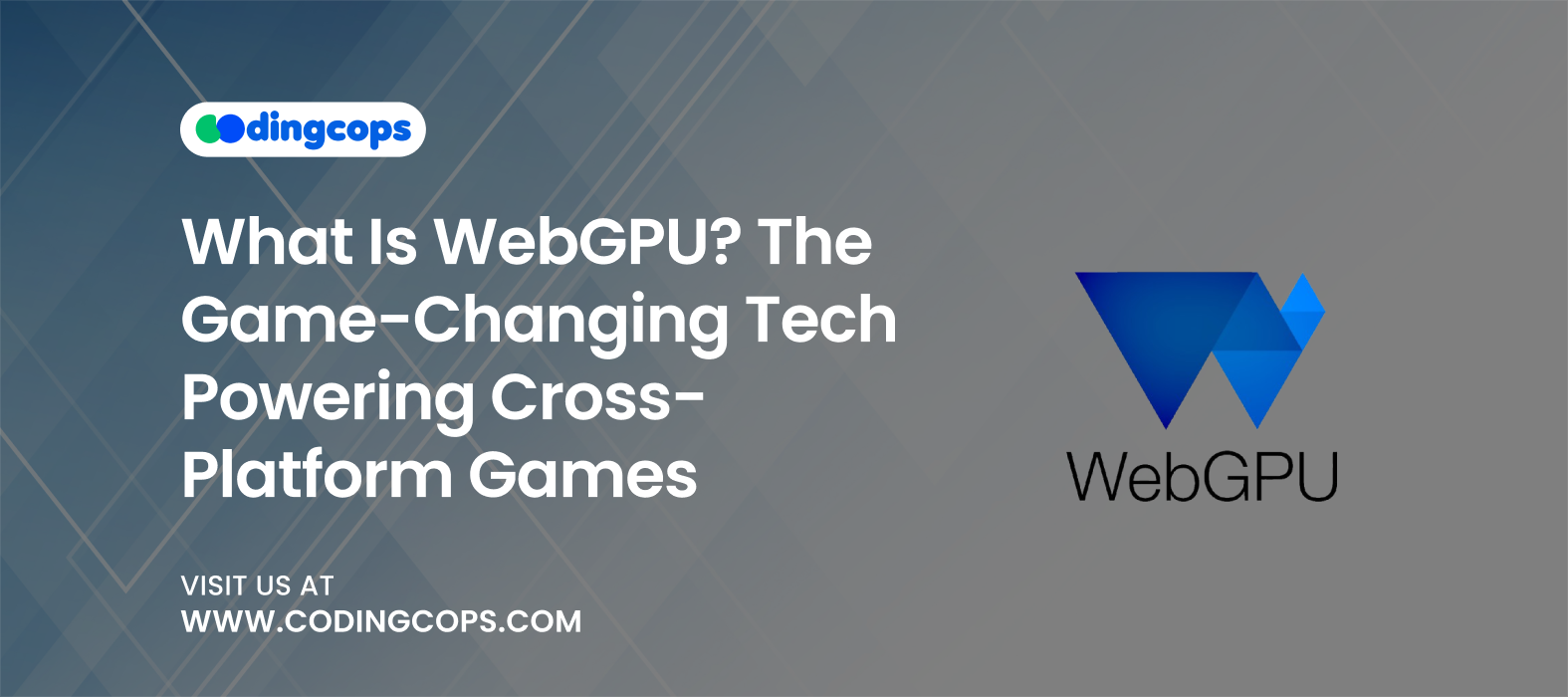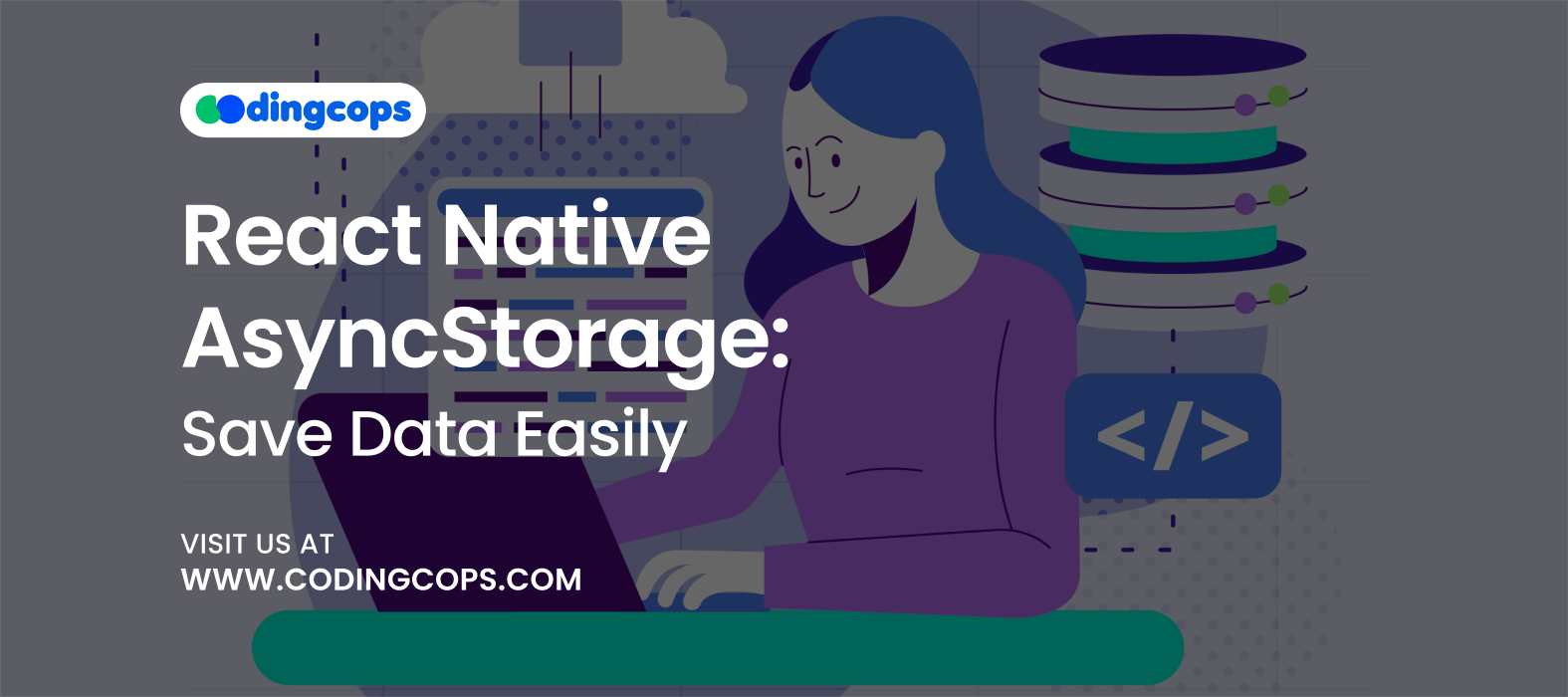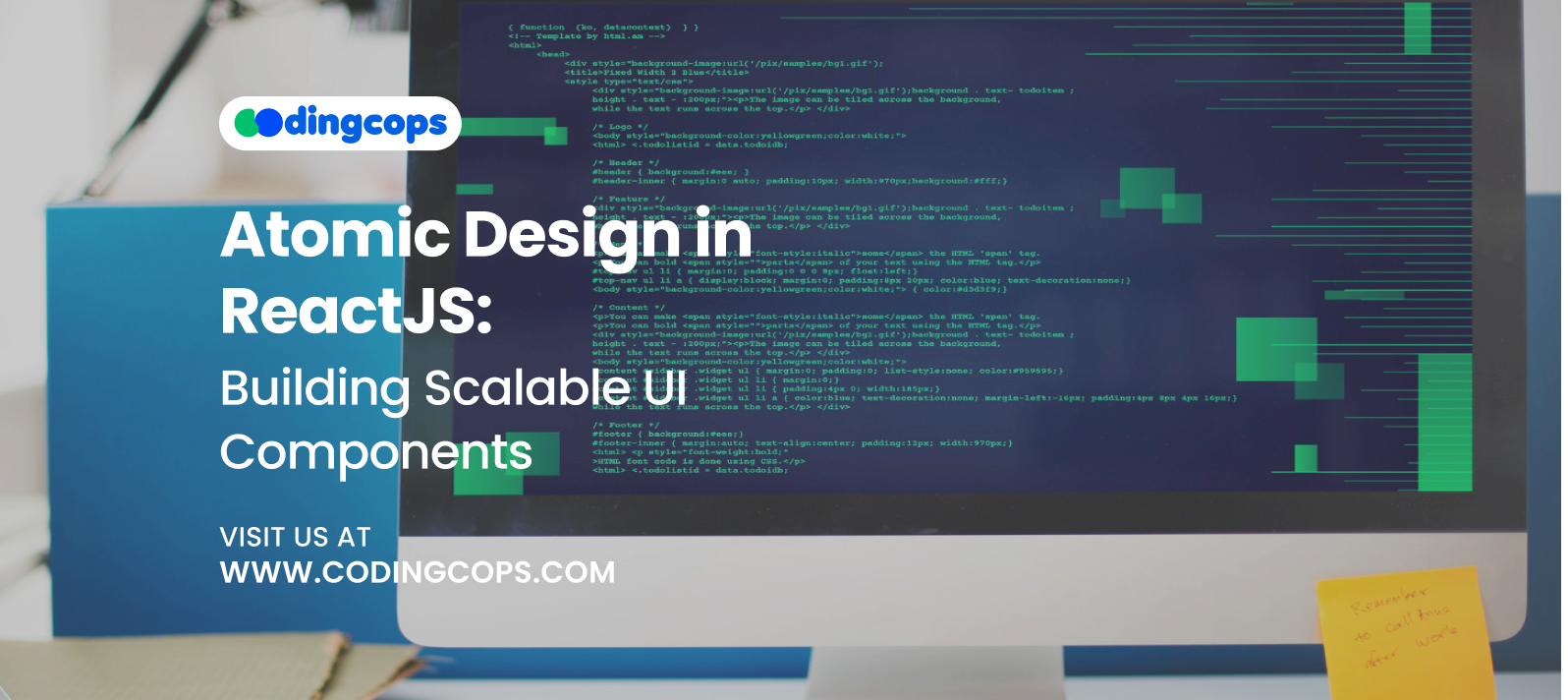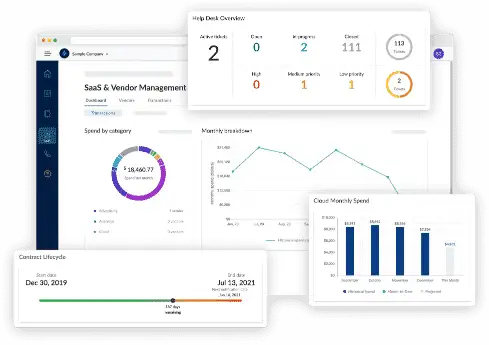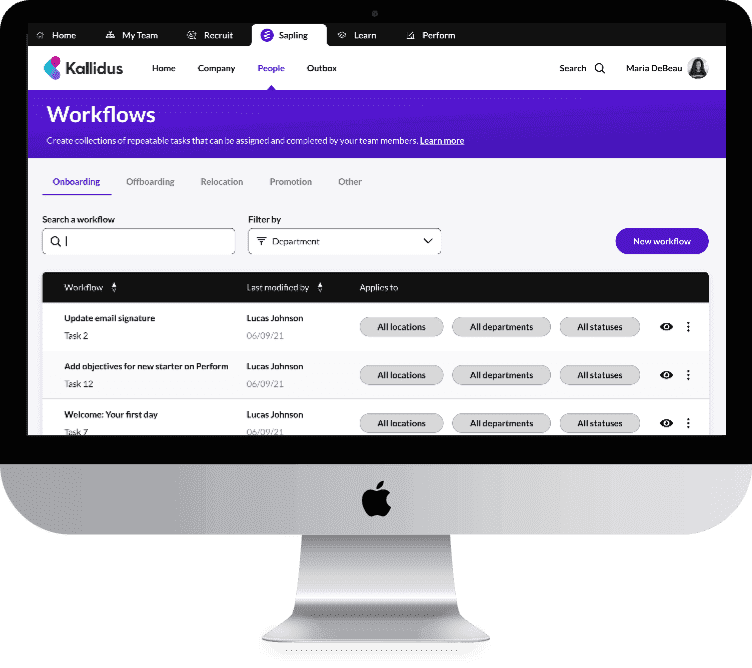According to Statista, the gaming industry is a massive global market with revenues reaching $522.46 billion. Moreover, for years, developers have relied on WebGL to render graphics in browsers. However, games are becoming more demanding, and developers want greater control over performance and hardware.
But WebGPU is transforming how we build high performance and cross platform games for the web. It promises not only better performance but also access to the kind of low level GPU features previously available only to native desktop or console apps.
In this guide, we will break down what WebGPU is and its real world use cases and limitations. Furthermore, we will compare it to WebGL as well.
What is WebGPU?
WebGPU is a graphics API that enables web applications to use the browser to access contemporary GPU capabilities. WebGPU, a more potent and contemporary substitute for WebGL, was created by the W3C’s GPU for the Web Working Group.
Moreover, WebGPU serves as a bridge between low level GPU hardware access and high performance graphics rendering in the browser. Furthermore, it provides developers with tools to build graphically intensive applications while maintaining platform independence.
Additionally, WebGPU is built to integrate with modern native GPU APIs such as:
- Direct3D 12 on Windows
- Vulkan on Linux and Android
Features of WebGPU
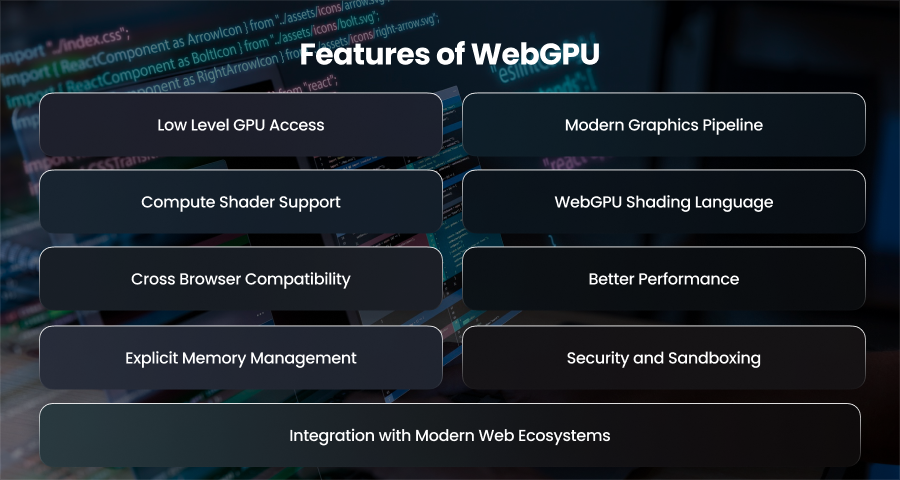
Low Level GPU Access
WebGPU’s low level access to GPU hardware is one of its best qualities. Unlike WebGL, which simplifies things by abstracting away a significant amount of the graphics process, WebGPU gives developers control over data processing. This low level access also allows developers to reduce unnecessary processing waste and maximize efficiency. Although it increases complexity, it gives game creators far more flexibility.
Modern Graphics Pipeline
Developed on top of contemporary APIs like Vulkan and Direct3D 12, WebGPU is a flexible graphics pipeline. This allows developers complete control over how graphics data, including fragment shading, is sent to the graphics processing unit. Its adaptability makes it easier than ever to apply sophisticated rendering techniques like dynamic lighting. More visually appealing visuals and more creative options for developers are the outcomes.
Compute Shader Support
Moreover, WebGPU has built in support for compute shaders. These enable developers to use the GPU for non graphics applications like machine learning inference and real time physics. Additionally, compute shaders use the parallel processing capabilities of contemporary GPUs to do intricate computations much faster than the CPU. This translates into more intelligent NPC behavior and smooth real time consequences for game developers.
WebGPU Shading Language
To support its modern architecture, WebGPU introduces WebGPU Shading Language. Unlike GLSL, which is prone to dangerous coding practices and may behave inconsistently across platforms, WGSL is particularly built for the web with readability and predictability in mind. Additionally, WGSL is statically typed, which facilitates error detection during compilation. It is also made to function uniformly in every browser. This facilitates the removal of cross platform shader problems and improves the security and efficiency of development.
Cross Browser Compatibility
One of WebGPU’s most important goals is ensuring broad compatibility across platforms and devices. By abstracting over modern native APIs, WebGPU presents a unified interface that works consistently across systems. Developers no longer have to write different rendering code for each platform. As of now, WebGPU is supported in Chrome by default, with experimental or behind the flad support in Safari.
Better Performance
WebGPU significantly improves performance by reducing CPU-GPU communication and enabling multi threaded rendering. Unlike WebGL, which relies heavily on the GPU and executes synchronously, WebGPU supports asynchronous rendering workflows and more efficient data pipelines. Higher frame rates are the result of these enhancements. For developers, this entails creating apps and games that, even with high graphics loads, seem quicker and more responsive.
Explicit Memory Management
Another notable shift with WebGPU is its explicit memory management model. WebGL handles memory management in the background, which might lead to unexpected behavior. Furthermore, WebGPU allows developers to better reuse buffers by giving them control over memory allocation. While this requires more careful planning, it ultimately leads to better performance. This is especially true in games with large 3D environments and frequent resource updates.
Integration with Modern Web Ecosystems
WebGPU is designed to work seamlessly with the modern web development stack. It can be used alongside WebAssembly for near native performance. It also integrates with JavaScript frameworks. Hence, even React and Angular developers can use it. Furthermore, game engines like Babylon are already integrating WebGPU, and it’s compatible with advanced build tools. Hence, this makes it easy to combine GPU accelerated rendering with other powerful web technologies, with fewer compromises.
Security and Sandboxing
Despite offering low level access, WebGPU is built with the web’s strict security model in mind. Furthermore, all execution takes place within the browser’s sandbox, meaning applications cannot access system level hardware directly or execute unsafe code. Moreover, this security first approach prevents many common vulnerabilities seen in native graphics programming. It also ensures that even powerful GPU operations remain safe for end users. This makes WebGPU a trusted option for both user-facing apps.
How WebGPU Transforms Game Development?
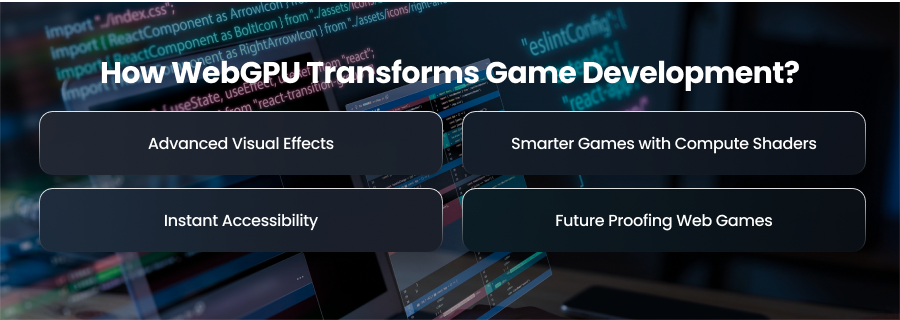
Advanced Visual Effects
Support for sophisticated graphics elements that were previously exclusive to native apps is one of WebGPU’s most obvious advantages. Real-time lighting and ambient occlusion may now be implemented by developers thanks to new tools. Additionally, by improving visual realism, these effects give players a more engaging experience.
With WebGPU, it’s also possible to integrate post processing effects like bloom and depth of field. These techniques, often reserved for AAA games, can now be used in browser games.
Smarter Games with Compute Shaders
WebGPU’s native support for compute shaders allows developers to harness the GPU not just for graphics but for general purpose computation. Therefore, this opens up new possibilities in game logic and simulation. For improved efficiency, CPU bound operations can now be offloaded to the GPU and executed in parallel.
Instant Accessibility
With WebGPU, players no longer need to download large installers or set up gaming users to enjoy high quality experiences. Moreover, gamers can run entirely in the browser, instantly accessible via a URL. This is a massive advantage for casual gamers and indie developers looking to distribute games widely and frictionlessly.
Future Proofing Web Games
Game engines and rendering techniques are changing quickly. Developers, therefore, require up to date tools. Therefore, WebGPU was created with future scalability and contemporary hardware in mind. Its architecture is also in keeping with current GPU developments, and it is made to interface with technologies like as machine learning libraries and WASM engines.
Differences Between WebGPU and WebGL
| Feature | WebGL | WebGPU |
| Underlying API | Based on OpenGSL ES 2.0/3.0 | Built on modern APIs: Vulkan, Direct3D 12 |
| Programming Model | High level | Low level |
| Shader Language | GLSL | WGSL |
| Compute Shaders | Limited in WebGL 2.0 | Fully supported |
| Performance | Higher CPU overhead, less efficient | Low CPU overhead, highly efficient |
| Graphics Pipelines | Limited customization | Fully programmable graphics pipeline |
| Memory Management | Automatic and abstracted | Manual, explicit memory allocation and resource control |
| Cross Platform Support | Broad browser support; mature ecosystem | Cross platform with growing browser adoption |
| Development Complexity | Easier to get started; suitable for simpler projects | More complex, but powerful for large and demanding applications |
| Tooling | Mature tooling support | Still maturing, improving with new DevTools and validation layers |
| Use Cases | Simple 2D/3D games, interactive visualizations | High performance games and compute heavy applications |
Use Cases of WebGPU
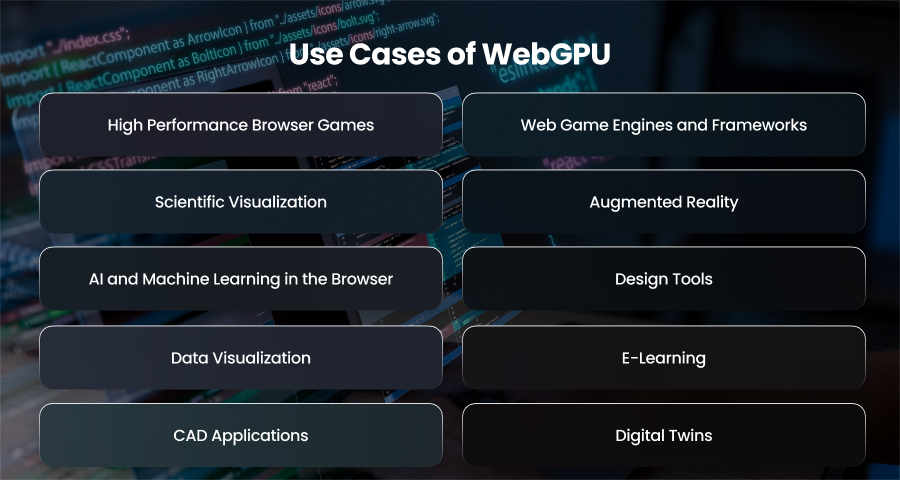
High Performance Browser Games
Perhaps the most obvious and immediately impactful use case for WebGPU is building next generation web games. With its support for advanced graphics pipelines and low overhead rendering. Also, WebGPU enables real time and high fidelity 3D gaming experiences directly in the browser. Developers can now implement dynamic lighting and other complex visual techniques that were previously limited to native game engines.
Web Game Engines and Frameworks
The shift toward WebGPU is also inspiring the development of entirely new web game engines that prioritize GPU efficiency and performance. Frameworks like Bevy are utilizing WebGPU to power their rendering core. Hence, this makes it possible to create full featured game engines that run in the browser with near native speed and visuals.
Scientific Visualization
Simulations in science and engineering that need strong, real time graphics are using WebGPU. Researchers can execute demanding workloads in the browser thanks to WebGPU’s computation and graphics capabilities, whether they are for astrophysical representations or climate modeling. Also, WebGPU’s graphics capabilities allow researchers to run intensive workloads directly in the browser.
These simulations can analyze massive data sets and produce incredibly dynamic outcomes by using GPU acceleration.
Augmented Reality
Real time rendering is necessary for immersion, and WebGPU’s improved speed makes it ideal for producing engaging augmented reality experiences.
Whether rendering high resolution 3D worlds in a VR headset or projecting 3D models onto real world spaces via augmented reality, WebGPU’s power and versatility allow it to complete any operation within the browser.
AI and Machine Learning in the Browser
One of the most exciting and emerging use cases for WebGPU is accelerated machine learning and AI inference directly in the browser. WebGPU enables developers to run GPU accelerated workloads such as neural network evaluations and matrix manipulations.
Libraries like TensorFlow are already exploring WebGPU as a backend. This offers faster model training and inference times. Also, this capability is particularly beneficial in games that rely on AI behavior. Moreover, it also enables the creation of ML applications that don’t require data to leave the user’s device.
Design Tools
Creative professionals are also poised to benefit from WebGPU. Graphics intensive designs and animation tools can now run directly in the browser with GPU accelerated rendering. WebGPU makes it possible to manipulate complex models and preview animations.
For example, platforms like Figma have shown how much can be accomplished with WebGL; WebGPU takes this even further by offering power and performance for creative workflows. This democratization of access to advanced tools opens up new possibilities for cloud collaboration and design.
Data Visualization
In enterprise and business contexts, WebGPU can drive real time data visualization platforms. By rendering large datasets using GPU acceleration, dashboards can display high volume streaming data with charts and heatmaps. Additionally, dashboards can provide dynamic 3D visualizations and graphs.
This real-time information may be used by sectors like banking and logistics without requiring native or complex apps. Also, with WebGPU, these visualizations remain fast even on lower powered devices.
E-Learning
The web is being used more and more by educational platforms to provide visual and interactive learning experiences. WebGPU allows for the direct execution of engaging educational resources in a browser, including physics-based interactions and real time 3D models.
Consider a chemistry student investigating a chemical structure in three dimensions, for instance. Moreover, a coding student learning graphics programming through live WebGPU examples, all without leaving the browser. Hence, these experiences enhance learning outcomes and accessibility across devices.
CAD Applications
CAD platforms traditionally require heavy desktop installations. So, WebGPU enables browser based CAD tools capable of rendering high polygon models and applying transformations in real time. Moreover, they offer collaborative design features for engineering and manufacturing workflows.
Digital Twins
WebGPU can power complex 3D digital twins that mirror physical environments in real time, like smart cities. Moreover, these models can integrate live IoT sensor data and visualize the performance or health of physical systems in a browser friendly interface.
Final Words
WebGPU is redefining what’s possible in the browser by delivering native level graphics and computer power across platforms. From high performance games to real time simulations, it provides smarter and richer web experiences. As adoption grows, WebGPU will be a cornerstone of the next generation of web technologies.

